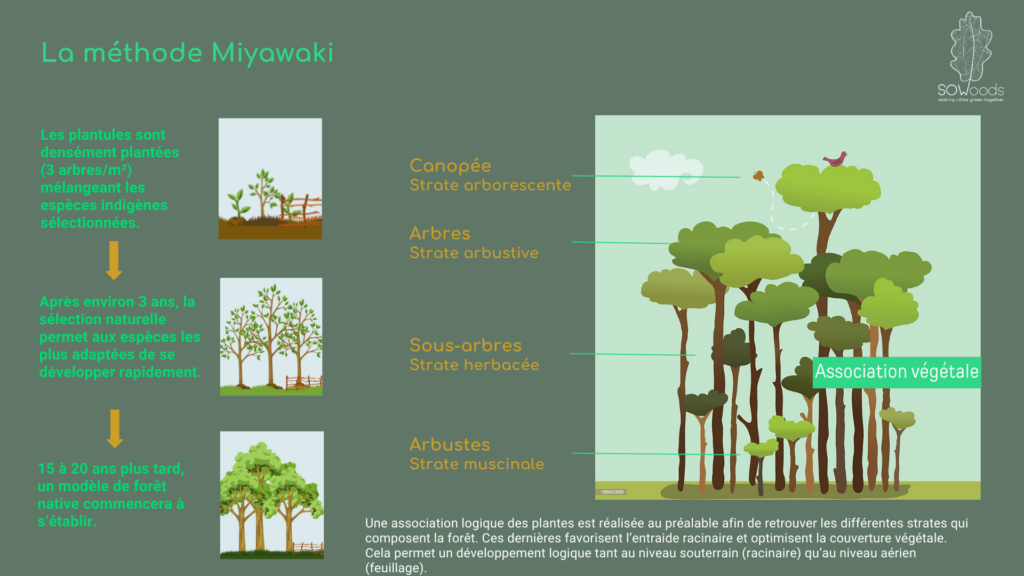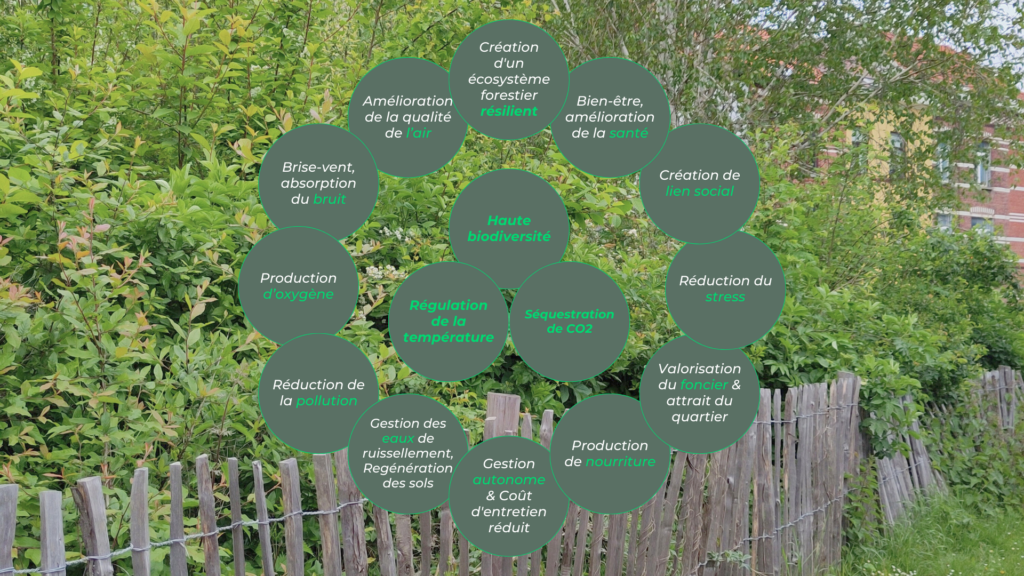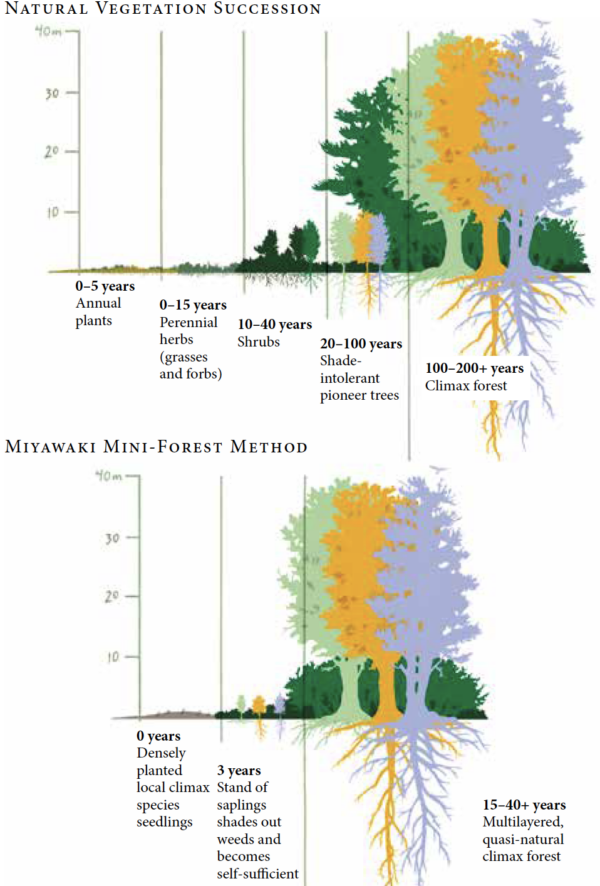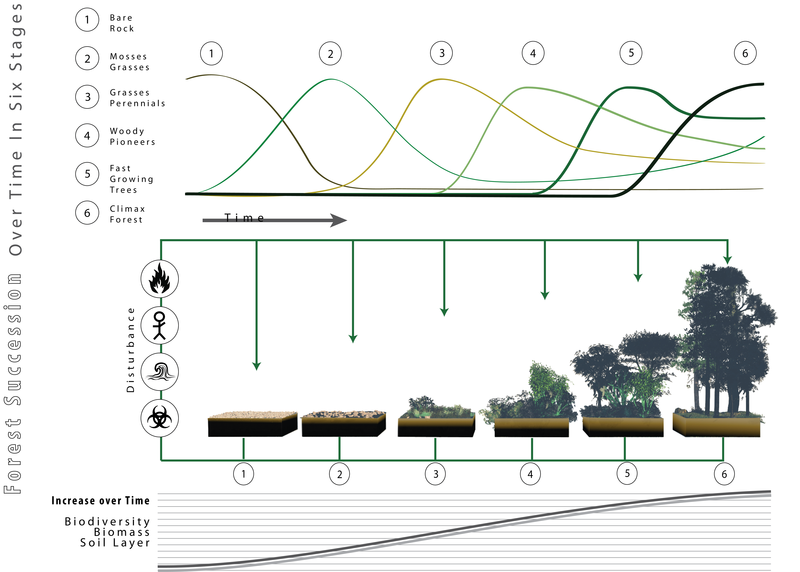SOWoods
The Miyawaki Method
SOWoods
The Miyawaki Method
Home » The Miyawaki Method
What is a Miyawaki Micro-Forest?
It is a plantation thoughtfully carried out to create a truly complex ecosystem. This type of forest space is more resilient, enabling the environment that hosts it to be more pleasant, healthier and more sustainable.
In order to understand what a micro-forest is, it is important to know what a forest itself is. As Francis Hallé* puts it:
“A forest is a lot of plants that lʼon see, and a lot of animals that lʼon not see. Itʼs a real ecosystem made up of fungi, plants, bacteria and animals. There is real richness, biodiversity, with complex ecosystem processes. Exchanges of matter and energy between fauna, flora and soil number in the billions.”.
For the French botanist, the forest is made up of a huge number of tree species. It sows itself and grows without any human intervention.
In the case of micro-forests, the soil is first regenerated. Very young trees are planted in imitation of the oldest, most natural forests in our regions. The forest is given a helping hand at the start. And then it takes on a life of its own. The micro-forest therefore bears no resemblance to a classic plantation of forest or ornamental trees, often made up of one or just a few different tree species.
How does a Micro-Forest work?
The micro-forest concept was born thanks to Professor Miyawaki. He claims that this method makes it possible to give life to more natural forests, which sʼépanouir in perfect autonomy, without lʼhomme needing to intervene. The proposed planting method was invented in 1970. It enabled the Japanese botanist to win the “Blue Planet Prize”, which is the lʼéquivalent of the Nobel Prize for ecology.
The Miyawaki method involves planting a wide variety of native tree species. The trees grow close together. This stimulates them to grow very quickly. Such a forest can reach its mature size in just 20 years (instead of a century or two if nature acted alone), and can bring in a wealth of biodiversity in a short space of time. This method, developed over 40 years ago, has proved its worth and is used all over the world.
*Internationally renowned botanist and primary forest specialist
With the Miyawaki method, you don’t have to be a rocket scientist. You simply skip the first stages of natural vegetation succession, planting directly the species at the end of the process. We call them the Climactic Community or Natural Potential Vegetation.







